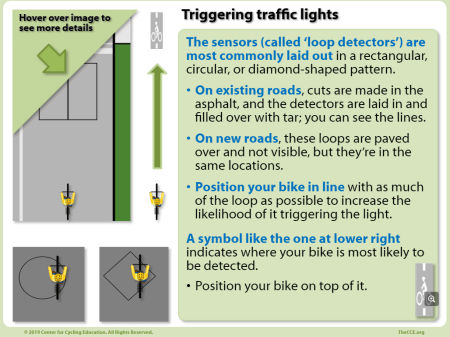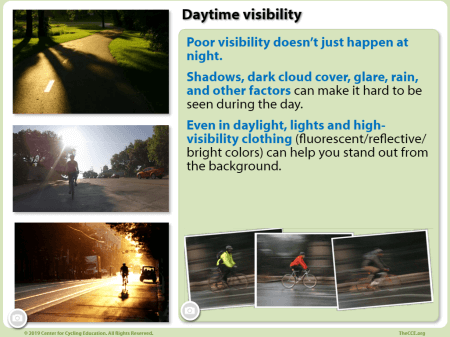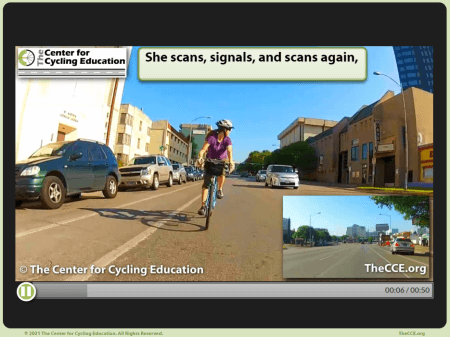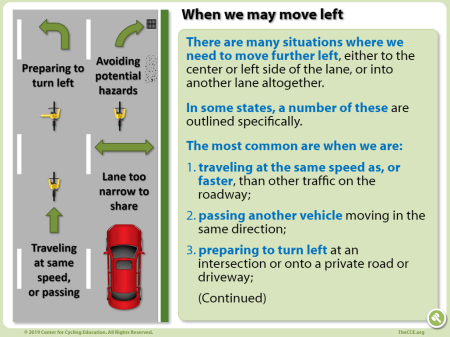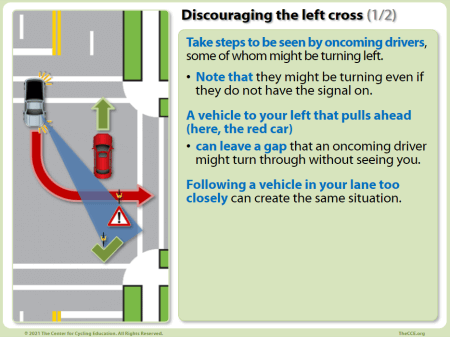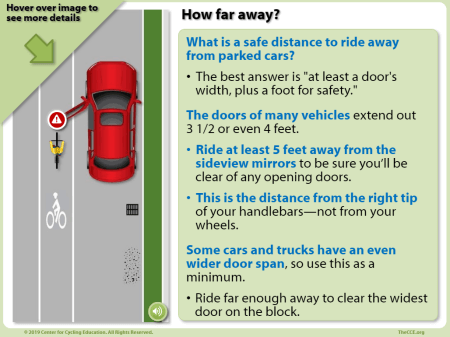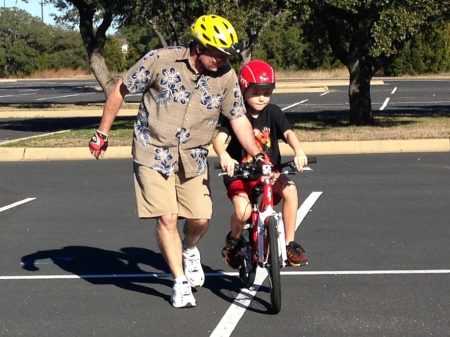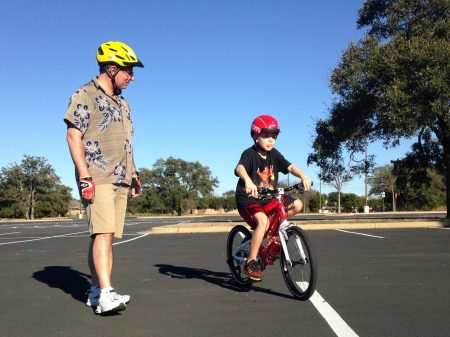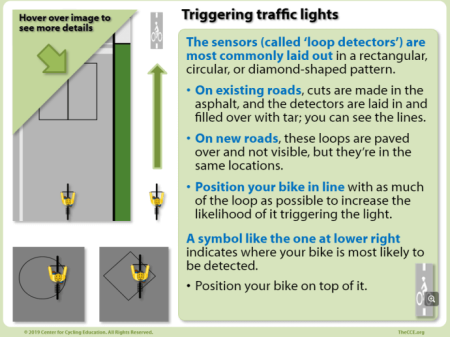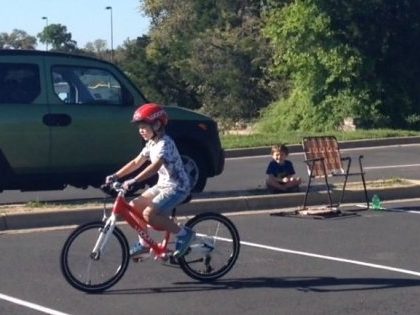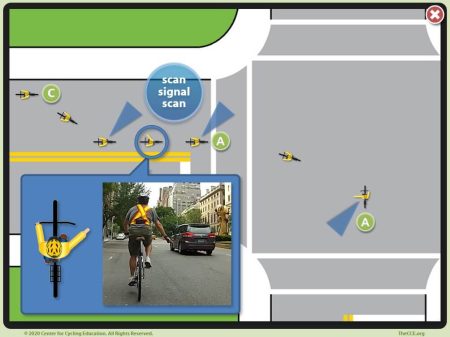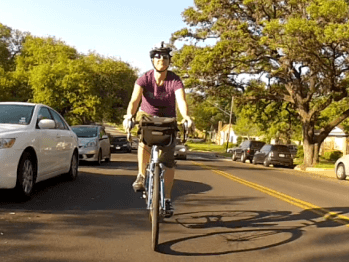State cycling laws for Texas
There are no federal laws outlining rules of the road. Instead, each state has its own set of traffic laws. In many cases, these are based at least in part on the Uniform Vehicle Code.
The Texas Transportation Code governs bicycling in the state.
In addition to this, many counties, cities/towns, campuses, & military bases may have their own traffic regulations, usually known as ordinances or codes.
These local regulations may not take away any rights listed in the state traffic laws, unless this option is expressly permitted by the state. They also may not permit a person riding a bike to do anything prohibited by state law.
See below for the state laws that apply to riding your bike in Texas.
USA » TX – Texas » Texas Transportation Code
(Retrieved from the Texas Legislature Online website ![]() on September 20, 2019. This is not an official version.)
on September 20, 2019. This is not an official version.)
Texas Transportation Code: Vehicles and Traffic
Title 7. Vehicles and Traffic
Subtitle A. Certificates of Title and Registration of Vehicles
Chapter 502. Registration of Vehicles
» Subchapter D. Vehicles Not Issued Registration
Chapter 541. Definitions
» Subchapter A. Persons and Governmental Authorities
» Subchapter C. Vehicles, Rail Transportation, and Equipment
» Subchapter D. Traffic, Traffic Areas, and Traffic Control
» Subchapter E. Miscellaneous Terms
Chapter 542. General Provisions
» Subchapter B. Uniformity and Interpretation of Traffic Laws
Chapter 545. Operation and Movement of Vehicles
Chapter 550. Accidents and Accident Reports
» Subchapter B. Duties Following Accident
- § 550.021. Accident Involving Personal Injury or Death.
- § 550.022. Accident Involving Damage to Vehicle.
- § 550.023. Duty to Give Information and Render Aid.
- § 550.024. Duty on Striking Unattended Vehicle.
- § 550.025. Duty on Striking Structure, Fixture, Or Highway Landscaping.
- § 550.026. Immediate Report of Accident.
Chapter 551. Operation of Bicycles and Mopeds, Golf Carts, and Other Low-Powered Vehicles
» Subchapter A. Application of Chapter
- § 551.101. Rights and Duties.
- § 551.102. General Operation.
- § 551.103. Operation on Roadway.
- § 551.104. Safety Equipment.
- § 551.105. Competitive Racing.
- § 551.106. Regulation of Bicycles by Department or Local Authority.
- § 551.107. Operation of Electric Bicycle.
» Subchapter C. Electric Personal Assistive Mobility Devices [i.e., Segway® devices and similar]
(Retrieved from the Texas Legislature Online website  on September 20, 2019. This is not an official version.)
on September 20, 2019. This is not an official version.)
TEXAS TRANSPORTATION CODE 
TITLE 7. VEHICLES AND TRAFFIC
SUBTITLE A. CERTIFICATES OF TITLE AND REGISTRATION OF VEHICLES
CHAPTER 502. REGISTRATION OF VEHICLES 
SUBCHAPTER D. VEHICLES NOT ISSUED REGISTRATION 
§ 502.143. OTHER VEHICLES. 
An owner may not register the following vehicles for operation on a public highway:
(1) power sweepers;
(2) motorized mobility devices;
(3) electric personal assistive mobility devices; and
(4) electric bicycles.
SUBTITLE C. RULES OF THE ROAD
CHAPTER 541. DEFINITIONS 
SUBCHAPTER A. PERSONS AND GOVERNMENTAL AUTHORITIES 
§ 541.001. PERSONS. 
In this subtitle:
(1-a) “Operator” means, as used in reference to a vehicle, a person who drives or has physical control of a vehicle.
(3) “Pedestrian” means a person on foot.
(4) “Person” means an individual, firm, partnership, association, or corporation.
§ 541.002. GOVERNMENTAL AUTHORITIES. 
In this subtitle:
(1) “Department” means the Department of Public Safety acting directly or through its authorized officers and agents.
(2) “Director” means the public safety director.
(3) “Local authority” means:
(A) a county, municipality, or other local entity authorized to enact traffic laws under the laws of this state; or
(B) a school district created under the laws of this state only when it is designating school crossing guards for schools operated by the district.
(4) “Police officer” means an officer authorized to direct traffic or arrest persons who violate traffic regulations.
(5) “State” has the meaning assigned by Section 311.005, Government Code, and includes a province of Canada.
SUBCHAPTER C. VEHICLES, RAIL TRANSPORTATION, AND EQUIPMENT 
§ 541.201. VEHICLES. 
In this subtitle:
(2) “Bicycle” means a device that a person may ride and that:
(A) is capable of being ridden solely using human power; and
(B) has two tandem wheels at least one of which is more than 14 inches in diameter.
(24) “Electric bicycle” has the meaning assigned by Section 664.001.
SUBCHAPTER D. TRAFFIC, TRAFFIC AREAS, AND TRAFFIC CONTROL 
§ 541.301. TRAFFIC. 
In this subtitle “traffic” means pedestrians, ridden or herded animals, and conveyances, including vehicles and streetcars, singly or together while using a highway for the purposes of travel.
§ 541.302. TRAFFIC AREAS. 
In this subtitle:
(1) “Alley” means a street that:
(A) is not used primarily for through traffic; and
(B) provides access to rear entrances of buildings or lots along a street.
(2) “Crosswalk” means:
(A) the portion of a roadway, including an intersection, designated as a pedestrian crossing by surface markings, including lines; or
(B) the portion of a roadway at an intersection that is within the connections of the lateral lines of the sidewalks on opposite sides of the highway measured from the curbs or, in the absence of curbs, from the edges of the traversable roadway.
(3) “Freeway” means a divided, controlled-access highway for through traffic.
(4) “Freeway main lane” means a freeway lane having an uninterrupted flow of through traffic.
(5) “Highway or street” means the width between the boundary lines of a publicly maintained way any part of which is open to the public for vehicular travel.
(6) “Improved shoulder” means a paved shoulder.
(7) “Laned roadway” means a roadway that is divided into at least two clearly marked lanes for vehicular travel.
(8) “Limited-access or controlled-access highway” means a highway or roadway to which:
(A) persons, including owners or occupants of abutting real property, have no right of access; and
(B) access by persons to enter or exit the highway or roadway is restricted under law except at a place and in the manner determined by the authority that has jurisdiction over the highway or roadway.
(9) “Private road or driveway” means a privately owned way or place used for vehicular travel and used only by the owner and persons who have the owner’s express or implied permission.
(10) “Ramp” means an interconnecting roadway of a traffic interchange, or a connecting roadway between highways at different levels or between parallel highways, that allows a vehicle to enter or exit a roadway.
(11) “Roadway” means the portion of a highway, other than the berm or shoulder, that is improved, designed, or ordinarily used for vehicular travel. If a highway includes at least two separate roadways, the term applies to each roadway separately.
(12) “Safety zone” means the area in a roadway officially designated for exclusive pedestrian use and that is protected or so marked or indicated by adequate signs as to be plainly visible at all times while so designated.
(13) “School crossing zone” means a reduced-speed zone designated on a street by a local authority to facilitate safe crossing of the street by children going to or leaving a public or private elementary or secondary school during the time the reduced speed limit applies.
(14) “School crosswalk” means a crosswalk designated on a street by a local authority to facilitate safe crossing of the street by children going to or leaving a public or private elementary or secondary school.
(15) “Shoulder” means the portion of a highway that is:
(A) adjacent to the roadway;
(B) designed or ordinarily used for parking;
(C) distinguished from the roadway by different design, construction, or marking; and
(D) not intended for normal vehicular travel.
(16) “Sidewalk” means the portion of a street that is:
(A) between a curb or lateral line of a roadway and the adjacent property line; and
(B) intended for pedestrian use.
§ 541.303. INTERSECTION. 
(a) In this subtitle, “intersection” means the common area at the junction of two highways, other than the junction of an alley and a highway.
(b) The dimensions of an intersection include only the common area:
(1) within the connection of the lateral curb lines or, in the absence of curb lines, the lateral boundary lines of the roadways of intersecting highways that join at approximate right angles; or
(2) at the place where vehicles could collide if traveling on roadways of intersecting highways that join at any angle other than an approximate right angle.
(c) Each junction of each roadway of a highway that includes two roadways at least 30 feet apart with the roadway of an intersecting highway, including each roadway of an intersecting highway that includes two roadways at least 30 feet apart, is a separate intersection.
§ 541.304. TRAFFIC CONTROL. 
In this subtitle:
(1) “Official traffic-control device” means a sign, signal, marking, or device that is:
(A) consistent with this subtitle;
(B) placed or erected by a public body or officer having jurisdiction; and
(C) used to regulate, warn, or guide traffic.
(2) “Railroad sign or signal” means a sign, signal, or device erected by a railroad, public body, or public officer to notify traffic of railroad tracks or an approaching railroad train.
(3) “Traffic-control signal” means a manual, electric, or mechanical device that alternately directs traffic to stop and to proceed.
SUBCHAPTER E. MISCELLANEOUS TERMS 
§ 541.401. MISCELLANEOUS TERMS. 
In this subtitle:
(1) “Daytime” means the period beginning one-half hour before sunrise and ending one-half hour after sunset.
(5) “Nighttime” means the period beginning one-half hour after sunset and ending one-half hour before sunrise.
(6) “Park” or “parking” means to stand an occupied or unoccupied vehicle, other than temporarily while loading or unloading merchandise or passengers.
(7) “Personal injury” means an injury to any part of the human body and that requires treatment.
(8) “Right-of-way” means the right of one vehicle or pedestrian to proceed in a lawful manner in preference to another vehicle or pedestrian that is approaching from a direction, at a speed, and within a proximity that could cause a collision unless one grants precedence to the other.
(9) “Stand” or “standing” means to halt an occupied or unoccupied vehicle, other than temporarily while receiving or discharging passengers.
(10) “Stop” or “stopping” means:
(A) when required, to completely cease movement; and
(B) when prohibited, to halt, including momentarily halting, an occupied or unoccupied vehicle, unless necessary to avoid conflict with other traffic or to comply with the directions of a police officer or a traffic-control sign or signal.
CHAPTER 542. GENERAL PROVISIONS 
SUBCHAPTER B. UNIFORMITY AND INTERPRETATION OF TRAFFIC LAWS 
§ 542.201. GENERAL RULE OF UNIFORMITY. ![]()
This subtitle applies uniformly throughout this state. A local authority may not enact or enforce an ordinance or rule that conflicts with this subtitle unless expressly authorized by this subtitle. However, a local authority may regulate traffic in a manner that does not conflict with this subtitle.
§ 542.202. POWERS OF LOCAL AUTHORITIES. ![]()
(a) This subtitle does not prevent a local authority, with respect to a highway under its jurisdiction and in the reasonable exercise of the police power, from:
(4) regulating the operation and requiring registration and licensing of a bicycle or electric bicycle, including payment of a registration fee, except as provided by Section 551.106;
SUBTITLE G. MOTORCYCLES AND ELECTRIC BICYCLES
CHAPTER 664. STANDARDS FOR ELECTRIC BICYCLES 
§ 664.001. DEFINITIONS. 
In this chapter:
(1) “Class 1 electric bicycle” means an electric bicycle:
(A) equipped with a motor that assists the rider only when the rider is pedaling; and
(B) with a top assisted speed of 20 miles per hour or less.
(2) “Class 2 electric bicycle” means an electric bicycle:
(A) equipped with a motor that may be used to propel the bicycle without the pedaling of the rider; and
(B) with a top assisted speed of 20 miles per hour or less.
(3) “Class 3 electric bicycle” means an electric bicycle:
(A) equipped with a motor that assists the rider only when the rider is pedaling; and
(B) with a top assisted speed of more than 20 but less than 28 miles per hour.
(4) “Electric bicycle” means a bicycle:
(A) equipped with:
(i) fully operable pedals; and
(ii) an electric motor of fewer than 750 watts; and
(B) with a top assisted speed of 28 miles per hour or less.
(5) “Top assisted speed” means the speed at which the bicycle’s motor ceases propelling the bicycle or assisting the rider.
Added by Acts 2019, 86th Leg., R.S., Ch. 485 (H.B. 2188), Sec. 8, eff. September 1, 2019.
CHAPTER 545. OPERATION AND MOVEMENT OF VEHICLES 
§ 545.065. STATE AND LOCAL REGULATION OF LIMITED-ACCESS OR CONTROLLED-ACCESS HIGHWAYS.
(a) The Texas Transportation Commission by resolution or order recorded in its minutes may prohibit the use of a limited-access or controlled-access highway under the jurisdiction of the commission by a parade, funeral procession, pedestrian, bicycle, electric bicycle, motorcycle equipped with a motor that has an engine piston displacement of 250 cubic centimeters or less, or nonmotorized traffic.
(b) If the commission adopts a rule under Subsection (a), the commission shall erect and maintain official traffic-control devices on the portions of the limited-access or controlled-access highway to which the rule applies.
(c) A local authority by ordinance may prohibit the use of a limited-access or controlled-access roadway under the jurisdiction of the authority by a parade, funeral procession, pedestrian, bicycle, electric bicycle, motorcycle equipped with a motor that has an engine piston displacement of 250 cubic centimeters or less, or nonmotorized traffic.
(d) If a local authority adopts an ordinance under Subsection (c), the authority shall erect and maintain official traffic-control devices on the portions of the limited-access or controlled-access roadway to which the ordinance applies.
CHAPTER 550. ACCIDENTS AND ACCIDENT REPORTS
SUBCHAPTER B. DUTIES FOLLOWING ACCIDENT
§ 550.021. ACCIDENT INVOLVING PERSONAL INJURY OR DEATH.
(a) The operator of a vehicle involved in an accident that results or is reasonably likely to result in injury to or death of a person shall:
(1) immediately stop the vehicle at the scene of the accident or as close to the scene as possible;
(2) immediately return to the scene of the accident if the vehicle is not stopped at the scene of the accident;
(3) immediately determine whether a person is involved in the accident, and if a person is involved in the accident, whether that person requires aid; and
(4) remain at the scene of the accident until the operator complies with the requirements of Section 550.023.
(b) An operator of a vehicle required to stop the vehicle by Subsection (a) shall do so without obstructing traffic more than is necessary.
(c) A person commits an offense if the person does not stop or does not comply with the requirements of this section. An offense under this section:
(1) involving an accident resulting in:
(A) death of a person is a felony of the second degree; or
(B) serious bodily injury, as defined by Section 1.07, Penal Code, to a person is a felony of the third degree; and
(2) involving an accident resulting in injury to which Subdivision (1) does not apply is punishable by:
(A) imprisonment in the Texas Department of Criminal Justice for not more than five years or confinement in the county jail for not more than one year;
(B) a fine not to exceed $5,000; or
(C) both the fine and the imprisonment or confinement.
§ 550.022. ACCIDENT INVOLVING DAMAGE TO VEHICLE.
(a) Except as provided by Subsection (b), the operator of a vehicle involved in an accident resulting only in damage to a vehicle that is driven or attended by a person shall:
(1) immediately stop the vehicle at the scene of the accident or as close as possible to the scene of the accident without obstructing traffic more than is necessary;
(2) immediately return to the scene of the accident if the vehicle is not stopped at the scene of the accident; and
(3) remain at the scene of the accident until the operator complies with the requirements of Section 550.023.
(b) If an accident occurs on a main lane, ramp, shoulder, median, or adjacent area of a freeway in a metropolitan area and each vehicle involved can be normally and safely driven, each operator shall move the operator’s vehicle as soon as possible to a designated accident investigation site, if available, a location on the frontage road, the nearest suitable cross street, or other suitable location to complete the requirements of Section 550.023 and minimize interference with freeway traffic.
(c) A person commits an offense if the person does not stop or does not comply with the requirements of Subsection (a). An offense under this subsection is:
(1) a Class C misdemeanor, if the damage to all vehicles is less than $200; or
(2) a Class B misdemeanor, if the damage to all vehicles is $200 or more.
(c-1) A person commits an offense if the person does not comply with the requirements of Subsection (b). An offense under this subsection is a Class C misdemeanor.
(d) In this section, a vehicle can be normally and safely driven only if the vehicle:
(1) does not require towing; and
(2) can be operated under its own power and in its usual manner, without additional damage or hazard to the vehicle, other traffic, or the roadway.
§ 550.023. DUTY TO GIVE INFORMATION AND RENDER AID.
The operator of a vehicle involved in an accident resulting in the injury or death of a person or damage to a vehicle that is driven or attended by a person shall:
(1) give the operator’s name and address, the registration number of the vehicle the operator was driving, and the name of the operator’s motor vehicle liability insurer to any person injured or the operator or occupant of or person attending a vehicle involved in the collision;
(2) if requested and available, show the operator’s driver’s license to a person described by Subdivision (1); and
(3) provide any person injured in the accident reasonable assistance, including transporting or making arrangements for transporting the person to a physician or hospital for medical treatment if it is apparent that treatment is necessary, or if the injured person requests the transportation.
§ 550.024. DUTY ON STRIKING UNATTENDED VEHICLE.
(a) The operator of a vehicle that collides with and damages an unattended vehicle shall immediately stop and:
(1) locate the operator or owner of the unattended vehicle and give that person the name and address of the operator and the owner of the vehicle that struck the unattended vehicle; or
(2) leave in a conspicuous place in, or securely attach in a plainly visible way to, the unattended vehicle a written notice giving the name and address of the operator and the owner of the vehicle that struck the unattended vehicle and a statement of the circumstances of the collision.
(b) A person commits an offense if the person violates Subsection (a). An offense under this section is:
(1) a Class C misdemeanor, if the damage to all vehicles involved is less than $200; or
(2) a Class B misdemeanor, if the damage to all vehicles involved is $200 or more.
§ 550.025. DUTY ON STRIKING STRUCTURE, FIXTURE, OR HIGHWAY LANDSCAPING.
(a) The operator of a vehicle involved in an accident resulting only in damage to a structure adjacent to a highway or a fixture or landscaping legally on or adjacent to a highway shall:
(1) take reasonable steps to locate and notify the owner or person in charge of the property of the accident and of the operator’s name and address and the registration number of the vehicle the operator was driving; and
(2) if requested and available, show the operator’s driver’s license to the owner or person in charge of the property.
(b) A person commits an offense if the person violates Subsection (a). An offense under this section is:
(1) a Class C misdemeanor, if the damage to all fixtures and landscaping is less than $200; or
(2) a Class B misdemeanor, if the damage to all fixtures and landscaping is $200 or more.
§ 550.026. IMMEDIATE REPORT OF ACCIDENT.
(a) The operator of a vehicle involved in an accident resulting in injury to or death of a person or damage to a vehicle to the extent that it cannot be normally and safely driven shall immediately by the quickest means of communication give notice of the accident to the:
(1) local police department if the accident occurred in a municipality;
(2) local police department or the sheriff’s office if the accident occurred not more than 100 feet outside the limits of a municipality; or
(3) sheriff’s office or the nearest office of the department if the accident is not required to be reported under Subdivision (1) or (2).
(b) If a section of road is within 100 feet of the limits of more than one municipality, the municipalities may agree regarding the maintenance of reports made under Subsection (a)(2). A county may agree with municipalities in the county regarding the maintenance of reports made under Subsection (a)(2). An agreement under this subsection does not affect the duty to report an accident under Subsection (a).
CHAPTER 551. OPERATION OF BICYCLES AND MOPEDS, GOLF CARTS, AND OTHER LOW-POWERED VEHICLES 
SUBCHAPTER A. APPLICATION OF CHAPTER 
§ 551.001. APPLICABILITY. ![]()
Except as provided by Subchapter C, this chapter applies only to a person operating a bicycle on:
(1) a highway; or
(2) a path set aside for the exclusive operation of bicycles.
§ 551.002. MOPED AND ELECTRIC BICYCLE INCLUDED. ![]()
A provision of this subtitle applicable to a bicycle also applies to:
(1) a moped, other than a provision that by its nature cannot apply to a moped; and
(2) an electric bicycle, other than a provision that by its nature cannot apply to an electric bicycle.
SUBCHAPTER B. BICYCLES 
§ 551.101. RIGHTS AND DUTIES. ![]()
(a) A person operating a bicycle has the rights and duties applicable to a driver operating a vehicle under this subtitle, unless:
(1) a provision of this chapter alters a right or duty; or
(2) a right or duty applicable to a driver operating a vehicle cannot by its nature apply to a person operating a bicycle.
(b) A parent of a child or a guardian of a ward may not knowingly permit the child or ward to violate this subtitle.
§ 551.102. GENERAL OPERATION. ![]()
(a) A person operating a bicycle shall ride only on or astride a permanent and regular seat attached to the bicycle.
(b) A person may not use a bicycle to carry more persons than the bicycle is designed or equipped to carry.
(c) A person operating a bicycle may not use the bicycle to carry an object that prevents the person from operating the bicycle with at least one hand on the handlebars of the bicycle.
(d) A person operating a bicycle, coaster, sled, or toy vehicle or using roller skates may not attach either the person or the bicycle, coaster, sled, toy vehicle, or roller skates to a streetcar or vehicle on a roadway.
§ 551.103. OPERATION ON ROADWAY. ![]()
(a) Except as provided by Subsection (b), a person operating a bicycle on a roadway who is moving slower than the other traffic on the roadway shall ride as near as practicable to the right curb or edge of the roadway, unless:
(1) the person is passing another vehicle moving in the same direction;
(2) the person is preparing to turn left at an intersection or onto a private road or driveway;
(3) a condition on or of the roadway, including a fixed or moving object, parked or moving vehicle, pedestrian, animal, or surface hazard prevents the person from safely riding next to the right curb or edge of the roadway; or
(4) the person is operating a bicycle in an outside lane that is:
(A) less than 14 feet in width and does not have a designated bicycle lane adjacent to that lane; or
(B) too narrow for a bicycle and a motor vehicle to safely travel side by side.
(b) A person operating a bicycle on a one-way roadway with two or more marked traffic lanes may ride as near as practicable to the left curb or edge of the roadway.
(c) Persons operating bicycles on a roadway may ride two abreast. Persons riding two abreast on a laned roadway shall ride in a single lane. Persons riding two abreast may not impede the normal and reasonable flow of traffic on the roadway. Persons may not ride more than two abreast unless they are riding on a part of a roadway set aside for the exclusive operation of bicycles.
§ 551.104. SAFETY EQUIPMENT. ![]()
(a) A person may not operate a bicycle unless the bicycle is equipped with a brake capable of making a braked wheel skid on dry, level, clean pavement.
(b) A person may not operate a bicycle at nighttime unless the bicycle is equipped with:
(1) a lamp on the front of the bicycle that emits a white light visible from a distance of at least 500 feet in front of the bicycle; and
(2) on the rear of the bicycle:
(A) a red reflector that is:
(i) of a type approved by the department; and
(ii) visible when directly in front of lawful upper beams of motor vehicle headlamps from all distances from 50 to 300 feet to the rear of the bicycle; or
(B) a lamp that emits a red light visible from a distance of 500 feet to the rear of the bicycle.
§ 551.105. COMPETITIVE RACING. ![]()
(a) In this section, “bicycle” means a nonmotorized vehicle propelled by human power.
(b) A sponsoring organization may hold a competitive bicycle race on a public road only with the approval of the appropriate local law enforcement agencies.
(c) The local law enforcement agencies and the sponsoring organization may agree on safety regulations governing the movement of bicycles during a competitive race or during training for a competitive race, including the permission for bicycle operators to ride abreast.
§ 551.106. REGULATION OF BICYCLES BY DEPARTMENT OR LOCAL AUTHORITY. ![]()
(a) The department or a local authority may not prohibit the operation of an electric bicycle:
(1) on a highway that is used primarily by motor vehicles; or
(2) in an area in which the operation of a nonelectric bicycle is permitted, unless the area is a path that:
(A) is not open to motor vehicles; and
(B) has a natural surface tread made by clearing and grading the native soil without adding surfacing materials.
(b) The department or a local authority may:
(1) prohibit the operation of a bicycle on a sidewalk; and
(2) establish speed limits for bicycles on paths set aside for the exclusive operation of bicycles and other paths on which bicycles may be operated.
(c) The department may establish rules for the administration of this section if necessary.
§ 551.107. OPERATION OF ELECTRIC BICYCLE. ![]()
(a) Subtitles A, B, and D and Chapter 663 do not apply to the operation of an electric bicycle.
(b) A person may not operate an electric bicycle unless the electric motor disengages or ceases to function either:
(1) when the operator stops pedaling; or
(2) when the brakes are applied.
(c) A person may not operate a Class 3 electric bicycle, as defined by Section 664.001, unless the person is at least 15 years of age. This subsection does not prohibit a person who is under 15 years of age from riding on a Class 3 bicycle as a passenger.
SUBCHAPTER C. ELECTRIC PERSONAL ASSISTIVE MOBILITY DEVICES ![]() [i.e., Segway® devices and similar]
[i.e., Segway® devices and similar]
§ 551.201. DEFINITION.
In this subchapter, “electric personal assistive mobility device” means a two non-tandem wheeled device designed for transporting one person that is:
(1) self-balancing; and
(2) propelled by an electric propulsion system with an average power of 750 watts or one horsepower.
§ 551.202. OPERATION ON ROADWAY.
(a) A person may operate an electric personal assistive mobility device on a residential street, roadway, or public highway with a speed limit of 30 miles per hour or less only:
(1) while making a direct crossing of a highway in a marked or unmarked crosswalk;
(2) where no sidewalk is available; or
(3) when so directed by a traffic control device or by a law enforcement officer.
(b) A person may operate an electric personal assistive mobility device on a path set aside for the exclusive operation of bicycles.
(c) Any person operating an electric personal assistive mobility device on a residential street, roadway, or public highway shall ride as close as practicable to the right-hand edge.
(d) Except as otherwise provided by this section, provisions of this title applicable to the operation of bicycles apply to the operation of electric personal assistive mobility devices.
§ 551.203. SIDEWALKS.
A person may operate an electric personal assistive mobility device on a sidewalk.
